On Now, About Now: A Section of Now at the CCA
Robots, avocados, and reusable straws feature alongside forward-looking housing designs in the CCA’s provocative current exhibition.
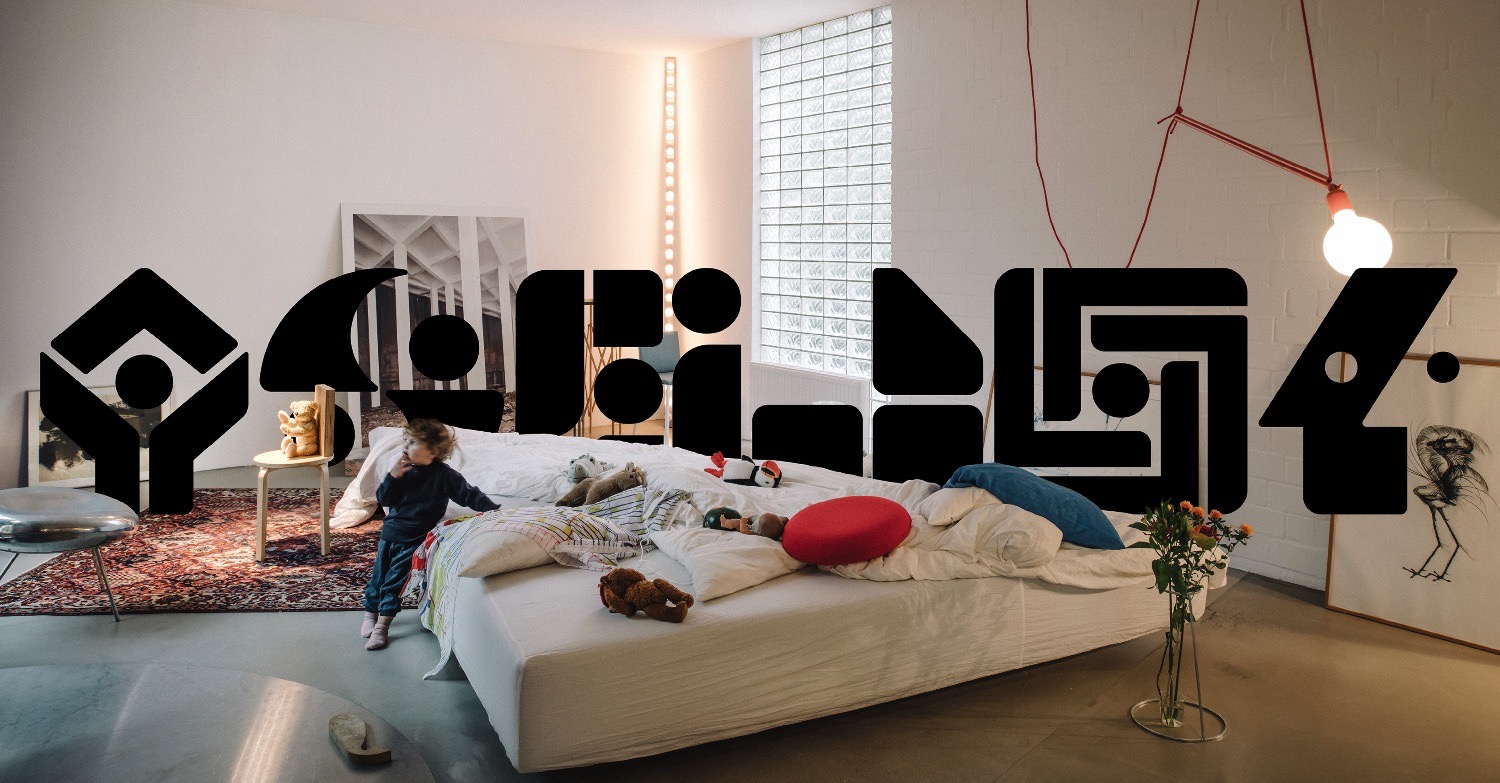
“A Section of Now” is on now and is about now. Conceived as a cross section of contemporary life from the last four decades or so, this provocative show fills the Montreal museum’s six main galleries until May 2022 with lots of familiar and unfamiliar stuff. Family, ownership, agency, labour, obsession and life cycle are the official themes, but the hot topics of care, domesticity, addiction, the gig economy, and youth also link the exhibition spaces. An accompanying tome, available in English and French, is available.
The overall message of “A Section of Now” is that lifestyle changes show up in design. Curator and book editor Giovanna Borasi invites architects to rethink spaces, objects, landscapes, and other arrangements in light of new ways of living. In terms of design, “A Section of Now” is very white, bright, and perhaps slightly more congested than most CCA exhibitions. Giant framed photographs predominate and big pieces of furniture occupy several of the galleries.
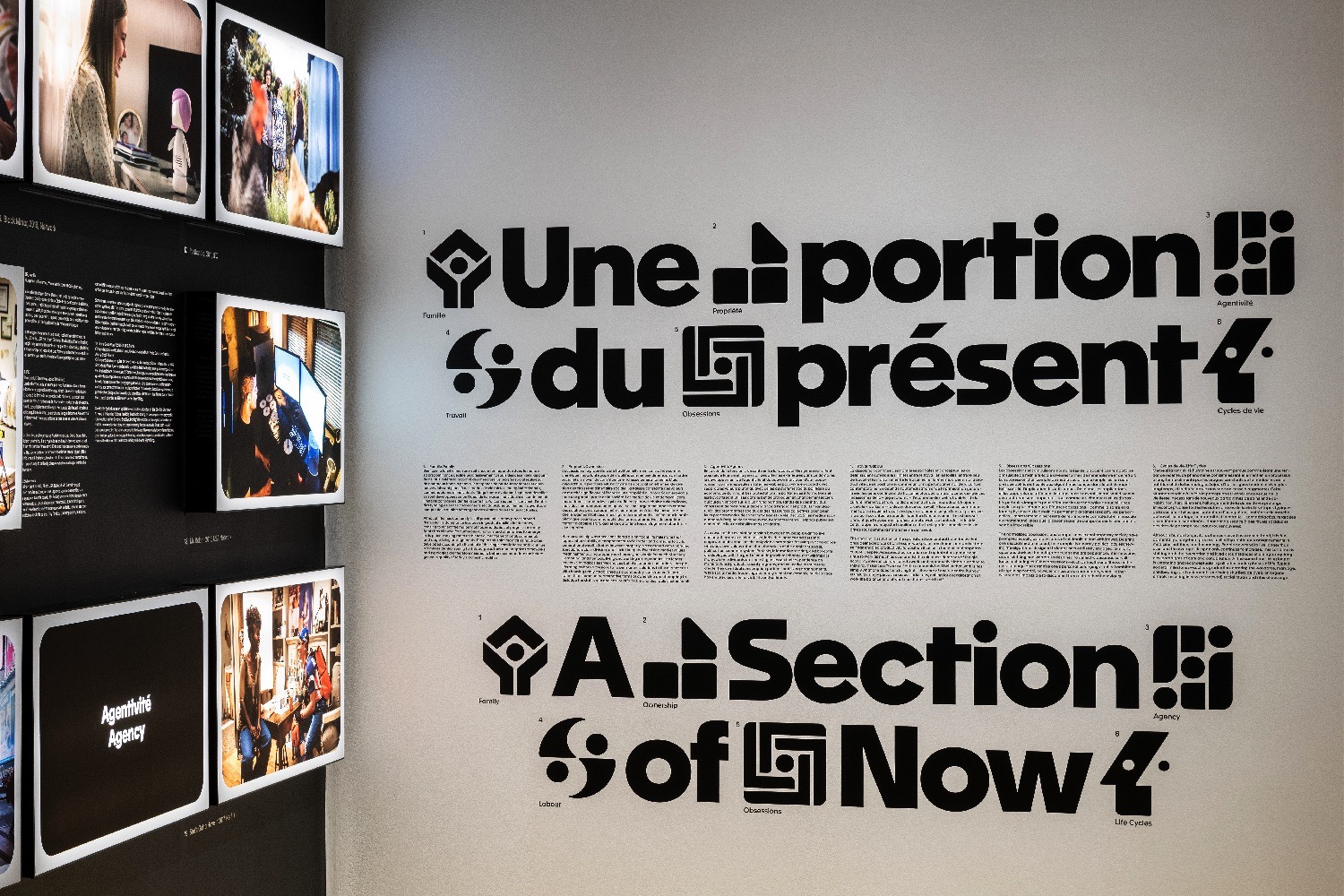
At first glance “A Section of Now” appears playful, but it is demanding. An online introductory video suggests that architecture and society are out of step. But I think the exhibition shows something else: that we now see architecture as consumer objects designed as antidotes to entrenched social problems. Buy this to help with your addiction to that. Women and aging people are still disadvantaged? We need special and better housing. Feeling lonely? Consider hiring a professional cuddler (or move in with your sister). As for racial equity? It matters more thanks to organized activism in public spaces. In such a paradigm, architecture is reactive. But what if architects and architecture were active? That’s what “A Section of Now” invites.
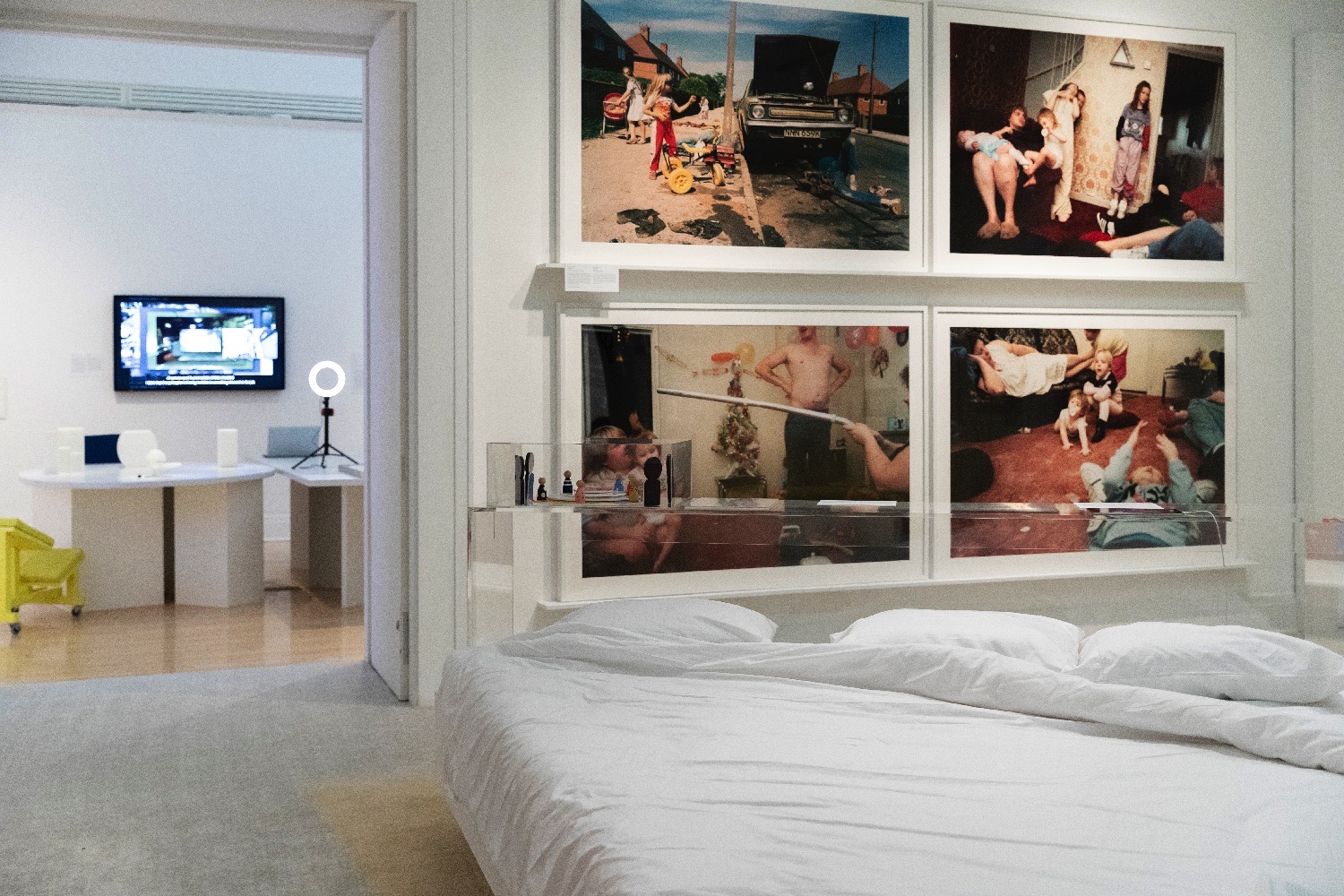
The main gallery, “Family,” has a triangular bed and a smart bassinet beside plexiglass shelves of architectural models and images. The bed represents unconventional sleeping arrangements, trumpeting the wide range of living arrangements popular today. Four massive photos of “chaotic” living rooms—including a sidewalk—serve as something of a headboard to the empty bed. The whole first gallery has a plush, light coloured carpet, giving the experience a soft and cuddly feel, like a bedroom. The use of carpets throughout the exhibition reinforces the idea of connections among the galleries.
“Ownership,” just to the east, is more about real estate. This second gallery is dominated by a lineup of bathroom fixtures—toilet, sink and shower floor—and housing designs that blur traditional functional and familiar divisions. Sanitärblock, the plumbing wall, is from a Swiss multi-unit dwelling which minimizes interior elements, reducing the rent by half.
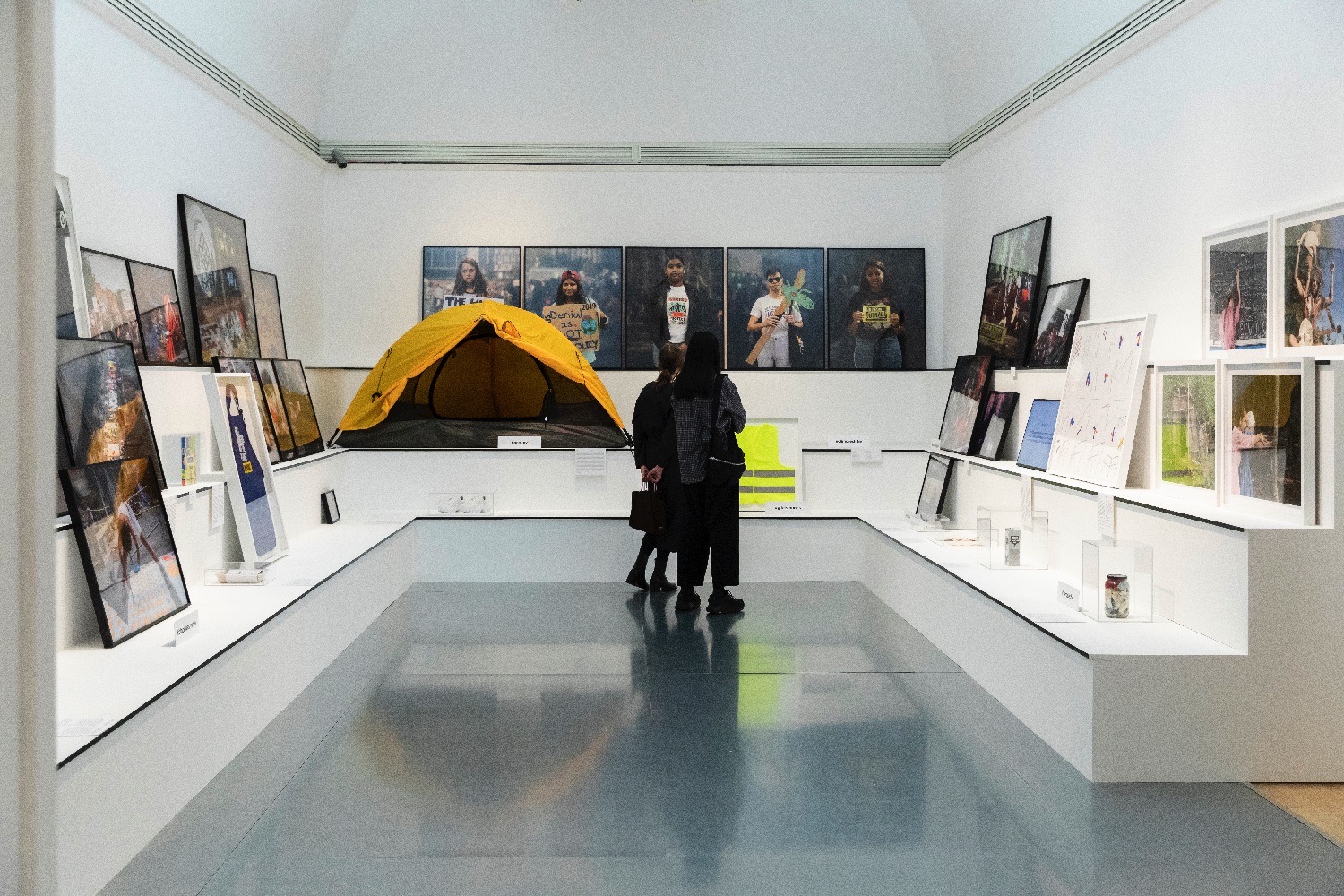
My favourite section is the corner gallery, “Agency.” Exhibition designer Sam Chermayeff has surrounded the small room’s walls with bleacher-like steps, which support large, leaning framed photographs. The “furniture” in this room is a dome-shaped tent, as if left over from Wall Street’s Occupy Movement. Hashtags such as #blacklivesmatter remind us how we know these images.
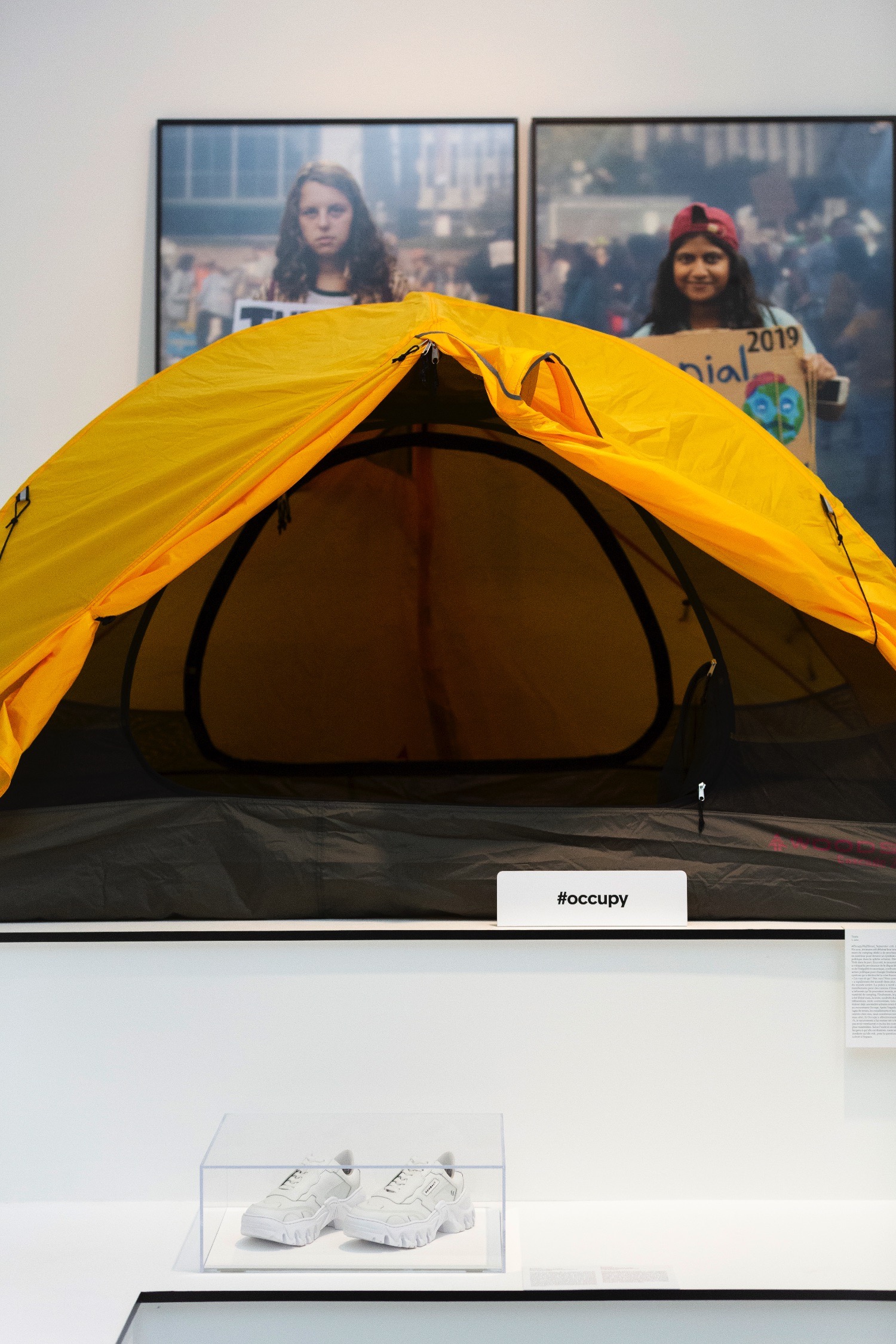
Something I really like about the exhibition is how ordinary things are framed and displayed as precious objects. In this room dedicated to Agency, for example, it’s a gilet jaune vest, biodegradable and vegan shoes, and a trio of reusable straws. Also striking is a printed and framed partial list of BIPOC-owned design firms, as if the list itself is a work of art. It’s the kind of thing we might find on Facebook, rather than in a museum.

“Labour” and “Obsession,” in the other two galleries along the front wall of the CCA, include many ubiquitous images and things: tables of various shapes and styles, a laptop, desk chairs. A humorous touch is that the CCA’s own ping pong table is here, representing an activity that supposedly makes workplaces healthy and fun.
“Obsession” is a super cool room. A metal stud wall struts through the space on an unexpected angle, decorated with the small globe lights used around dressing room mirrors. It even marches over a curvy stage—like a backdrop in a photographer’s studio—that exposes a dozen or so ordinary objects. There’s a Ziplock, yoga mat, water bottle, Airpods, kettlebells, craft beer, hoodie, selfie stick, wireless speaker, supplements, healing crystals, oil diffuser, and a drawer organizer. This stuff is so familiar. We’re complicit!
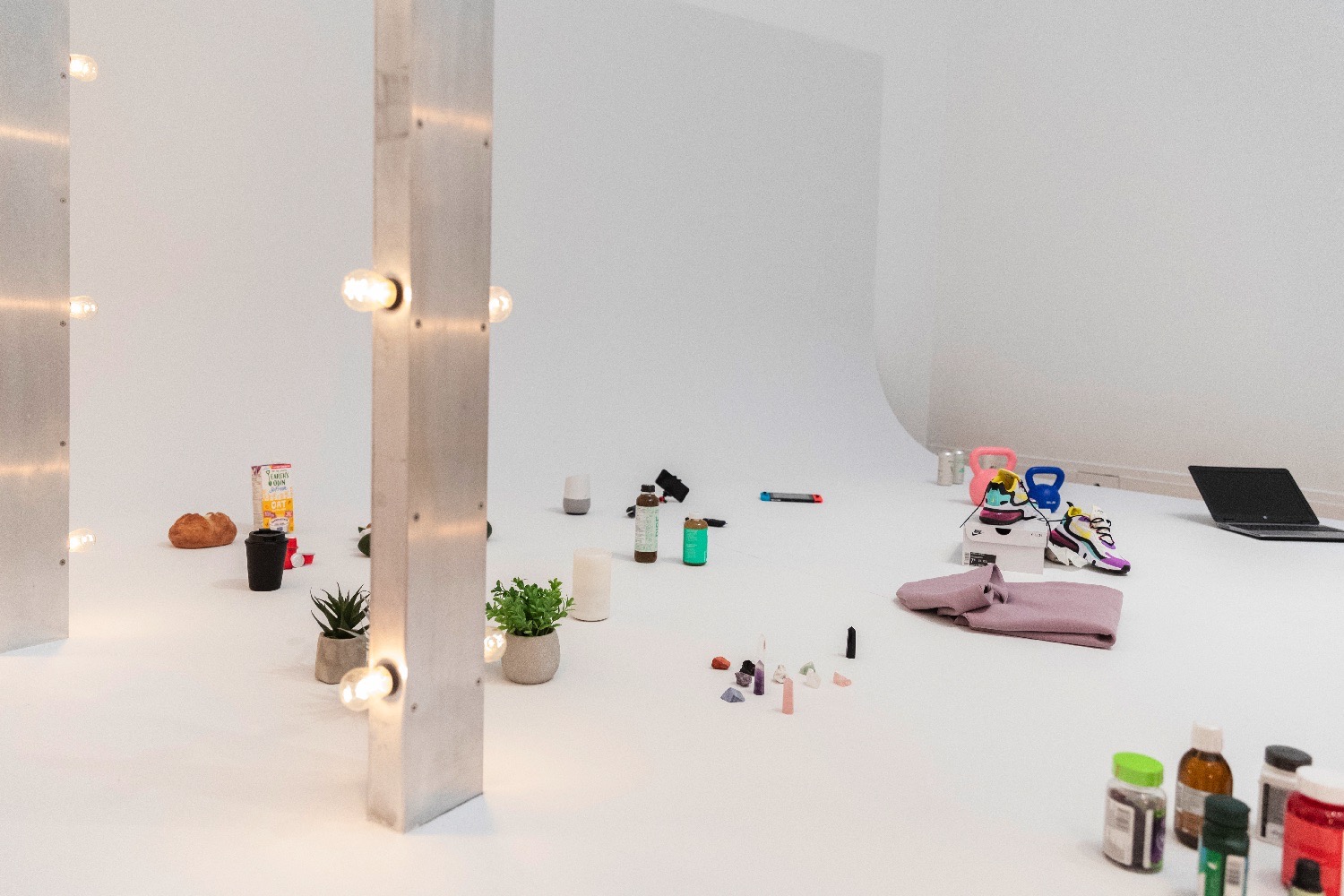
The final gallery in the circuit is futuristic and perhaps, as Chermayeff says in an interview about the exhibition design, “the most difficult on the viewer . . . because you have to form a position.” “Life cycle” features technologies that simulate or broaden bodily experience. This red-carpeted room has three parallel tables with screens and prototypes such as a chestfeeding kit, that allows men and/or non-biological parents to almost breastfeed babies. Throughout the gallery, an ominous voice recording from Dan Chen’s “End of Life Care Machine” plays and replays: “Hello, my friend. . . . You are not alone, you have me by your side. We hope you will have a pleasant afterlife. Time of death: 11:45 Goodbye, my friend.” Drawings for a new-style crematorium in Belgium face photos that document an isolated mountain-based collective in Utah, for young wealthy entrepreneurs. A kid’s raincoat with four arms signals genetic engineering that allows for more than two parents. There’s even a DIY insemination kit that doubles as a sex toy, turning a clinical process into something more pleasurable.
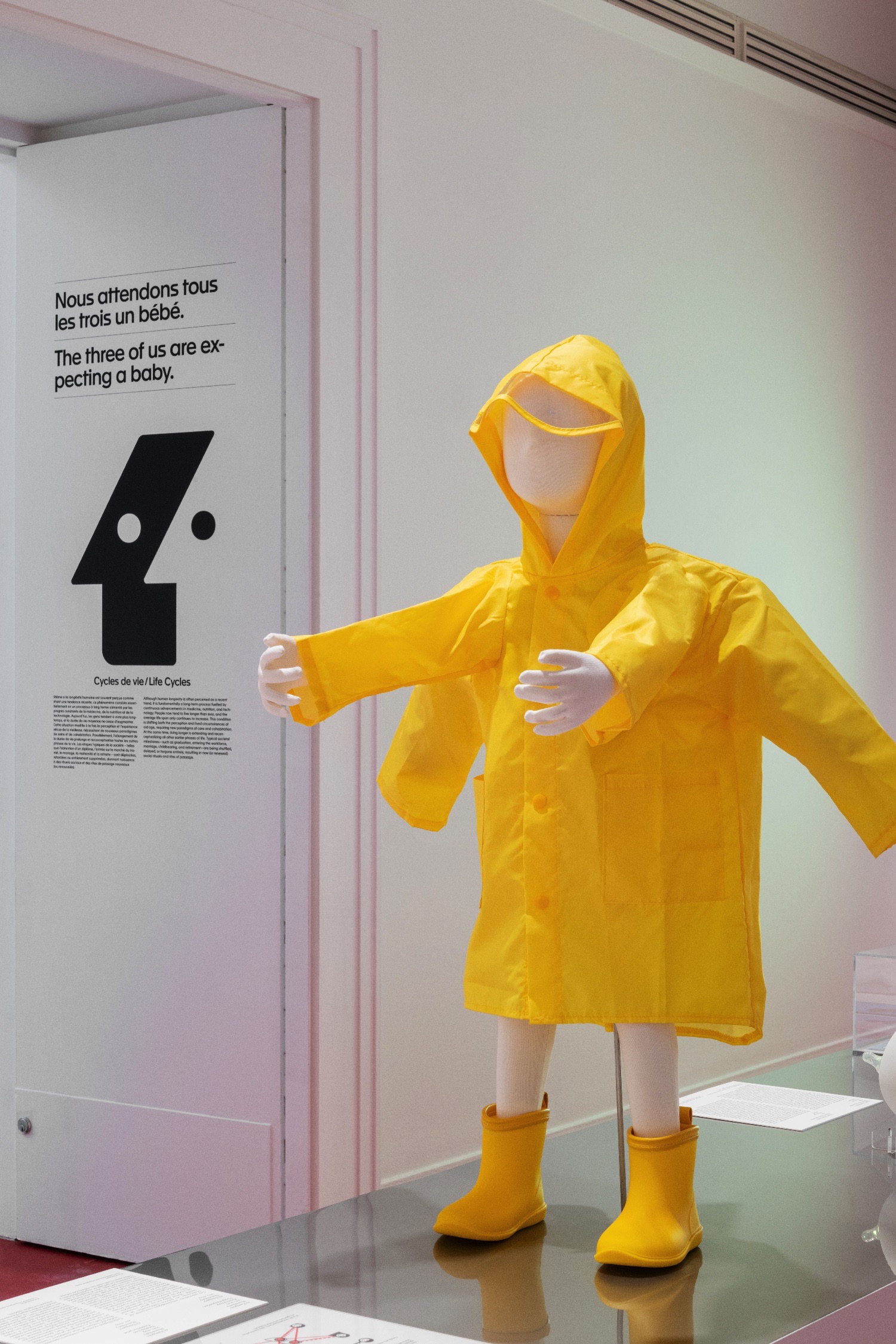
For architects and planners, the exhibition gathers an impressive and useful array of revolutionary housing designs that could inspire future neighourhoods and cities. Women, same-sex couples, minimalists, influencers, night owls, nomads, and individuals of all kinds are stakeholders in “A Section of Now.” Two Canadian housing projects are included: a nifty scheme for multi-generational housing by Toronto architects Williamson Williamson and an Edmonton duplex built by and for a divorced couple, Kent Kirkland and Monica McGrath, where the kids occupy a shared zone.
Still, contradictions abound. If the subject is truly “now,” where’s the pandemic? As of today, 5,282,807 patients have died of Covid-19. Has Covid not changed our perceptions of life and death? The exhibition catalogue, which mentions Covid-19 eight times, was actually delayed because of the worldwide shortage of paper related to the pandemic. Why not make a thing of it? Ditto for the section on “Labour.” Yes, electric scooters, grocery delivery, job relocation, and ring lights have proliferated, but where is the ubiquitous Zoom room that has made work for many of us much less fun? The section on “Agency” includes nods to Indigenous issues and anti-Indigenous racism. A reference to the original inhabitants and caretakers of the CCA site could have been very “now” in this gallery on activism.
As a particularly clever exhibition, “A Section of Now” raises as many questions as it answers. Its wallop comes from two unsettling juxtapositions. The first is that familiar objects are shown next to unfamiliar ones. For example, a Nespresso pod is in the same exhibition as a map for people forced to live in their cars. The second is that some rather messy subjects appear in the highly dignified galleries of the CCA, reminding us that aging, inequality, divorce, sex, childbirth, illness, love and avocados can shape architecture. Even the triangular bed is a bit tousled, as if recently occupied.
Annmarie Adams, FRAIC, is jointly appointed in the Guo-hua Fu School of Architecture and Department of Social Studies of Medicine, McGill University.
CCA Curatorial team: Francesco Garutti, Megan Marin, Hannah Strothmann, Ushma Thakrar
Research: Matthew de Santis, Iro Kalargyrou, and Laura Aparicio Llorente
Photography consultant: Melissa Harris, New York
TV consultant: Andrea Bellavita, Milan
Editors-in-charge (publication): Ushma Thakrar with Alexandra Pereira-Edwards
